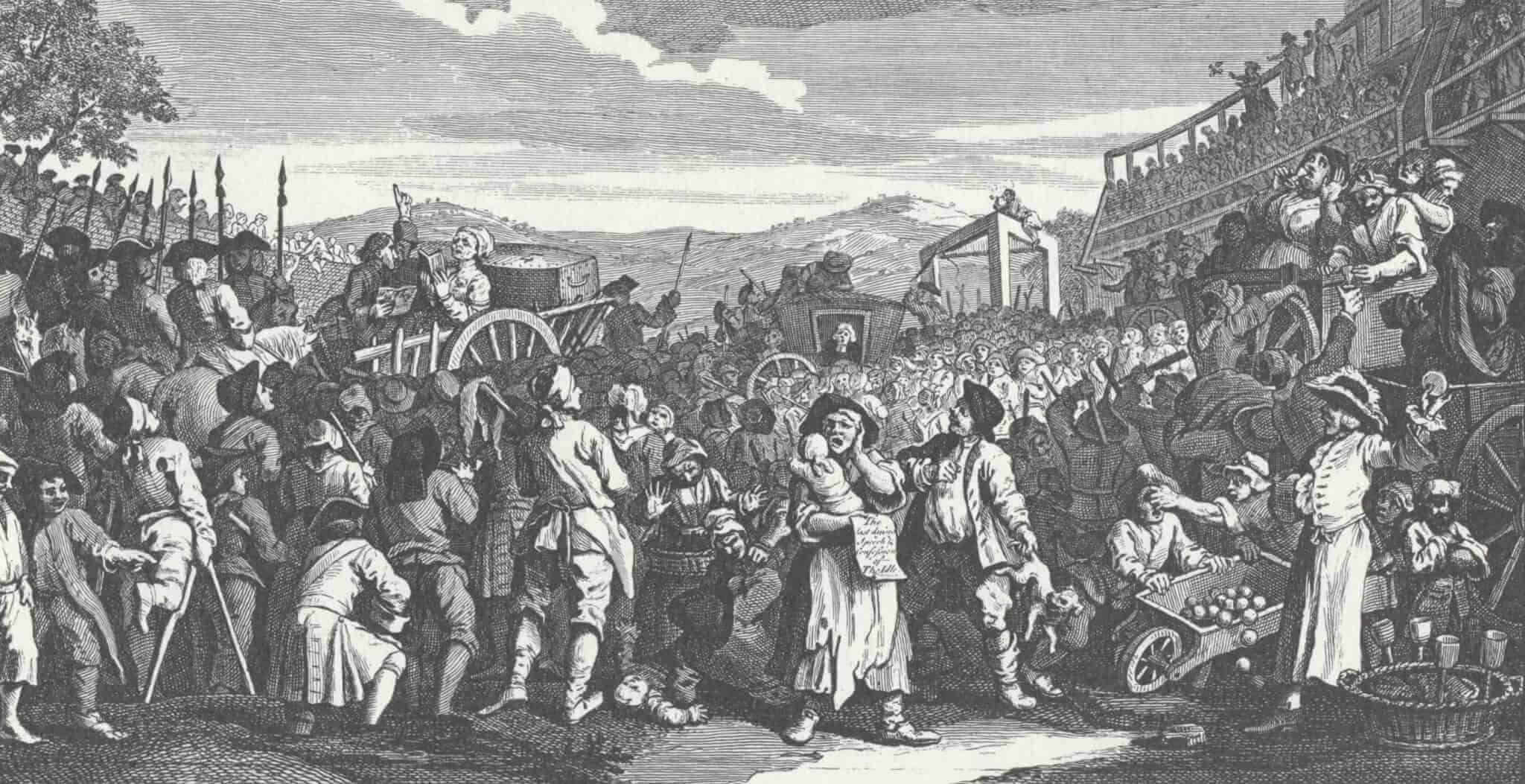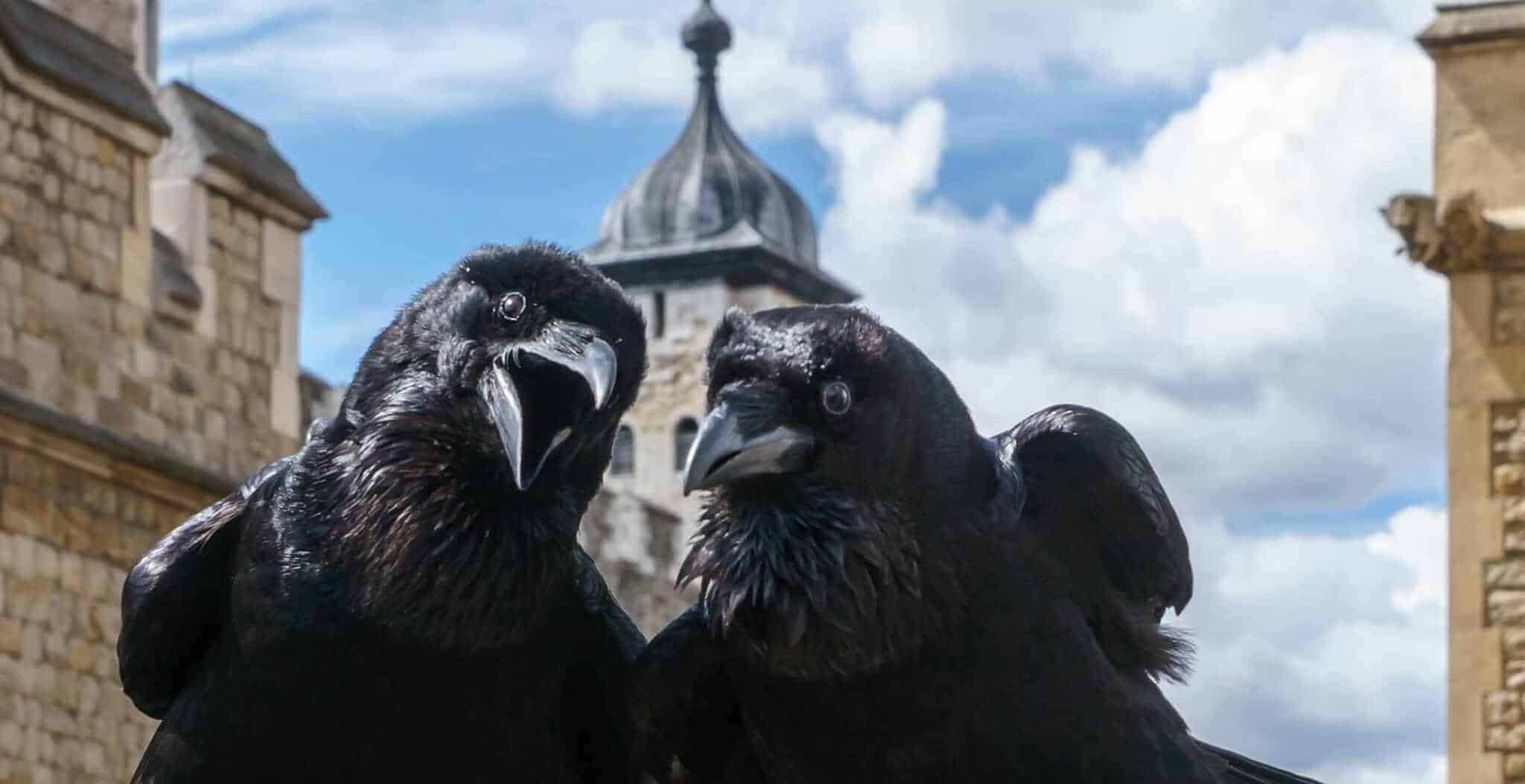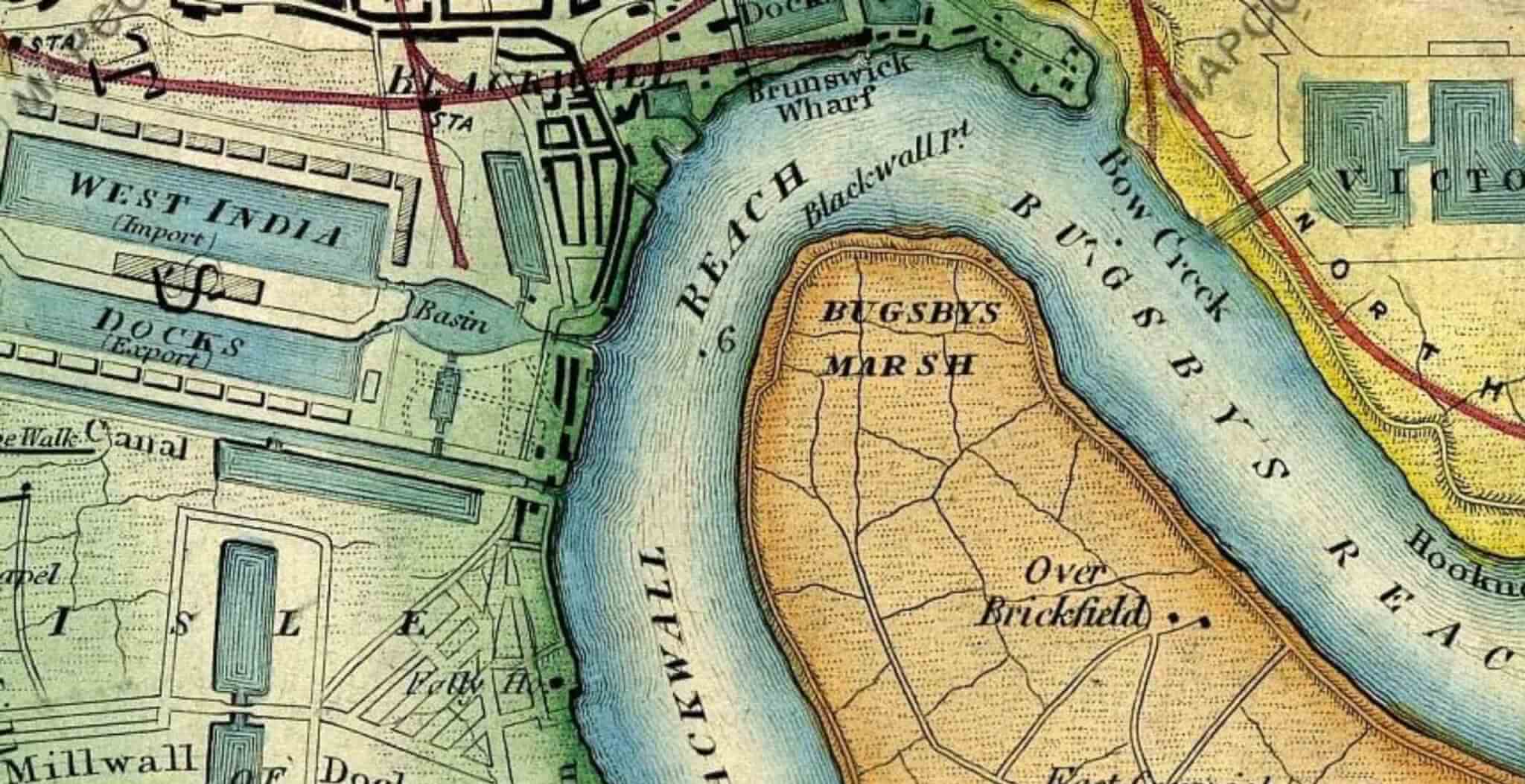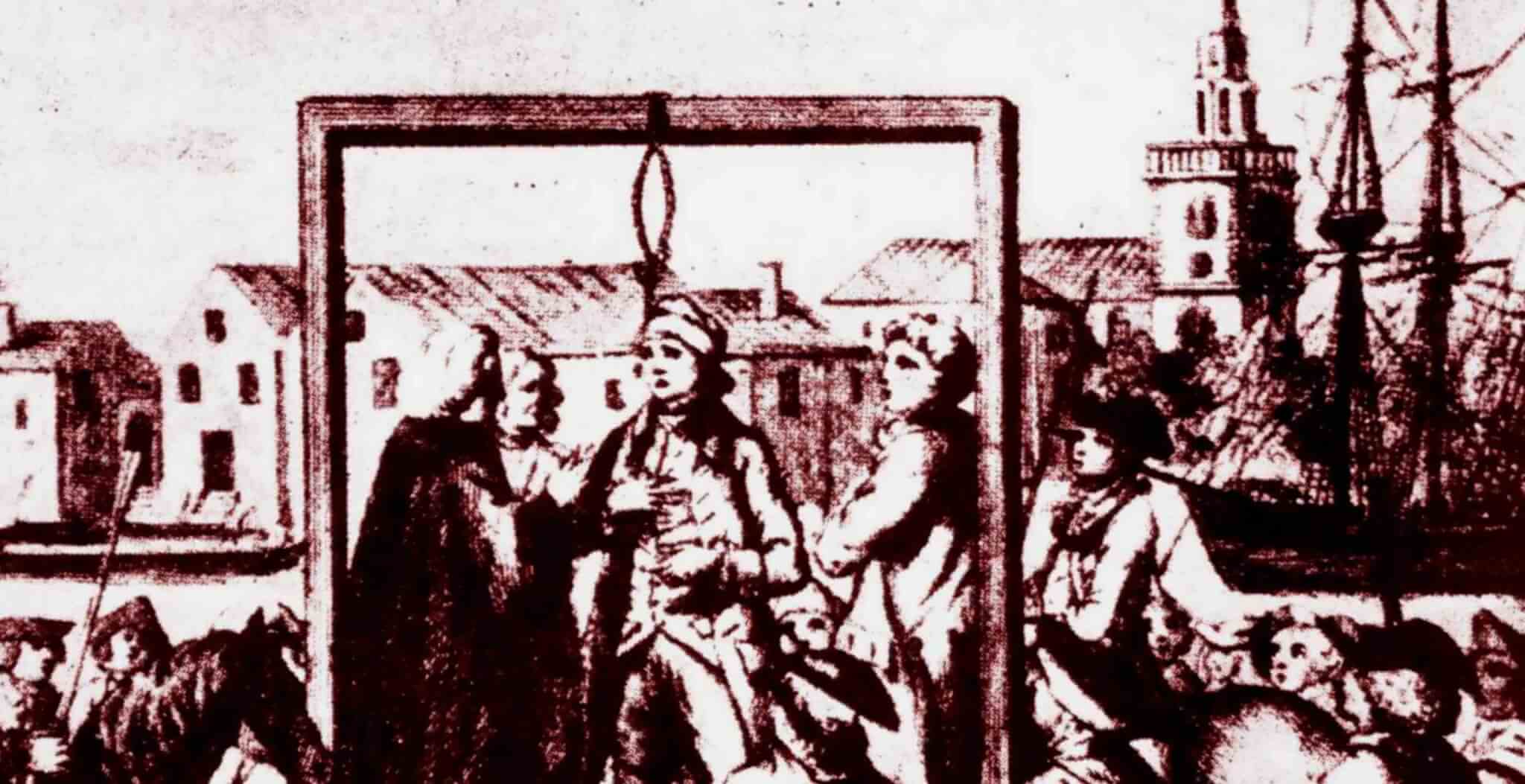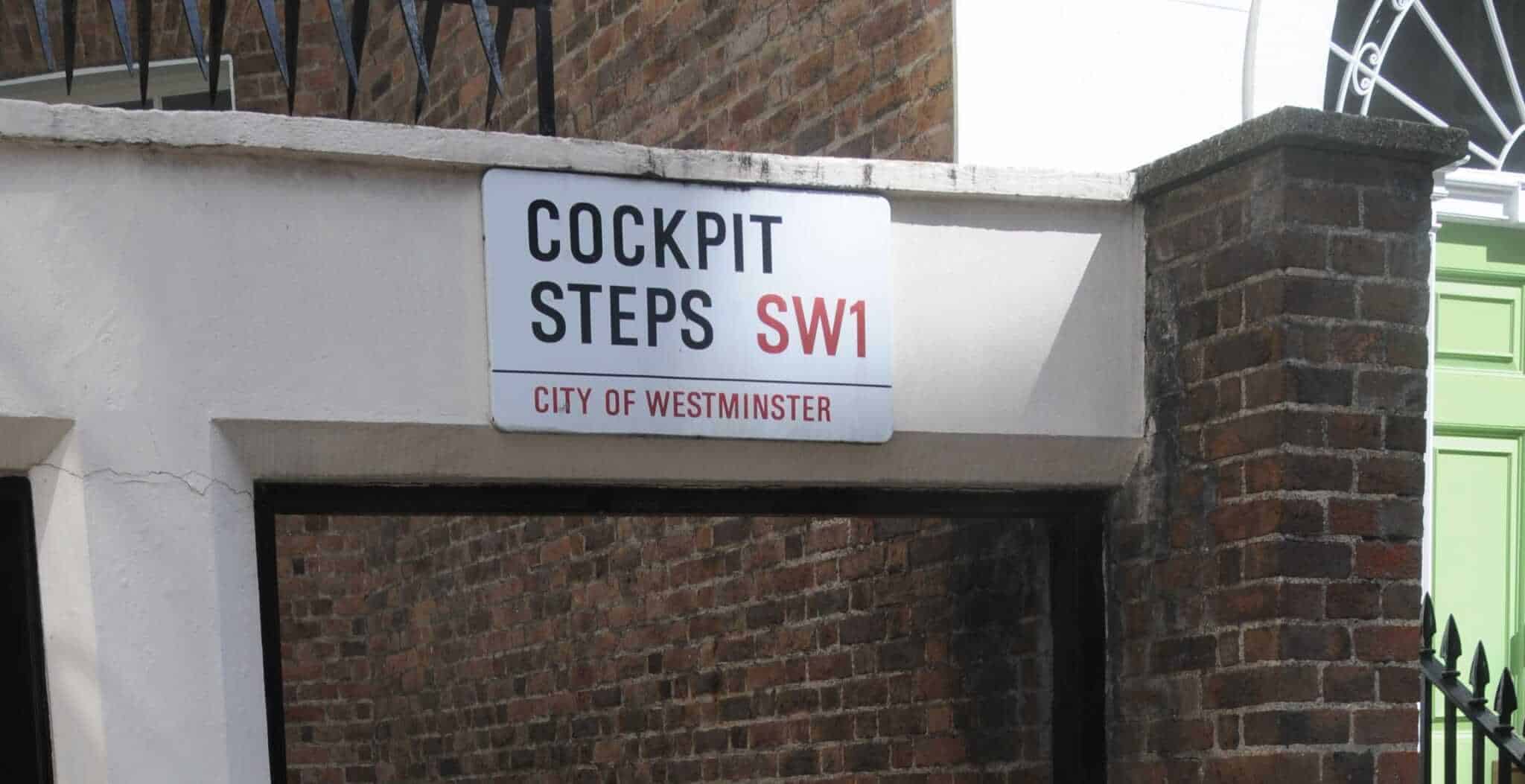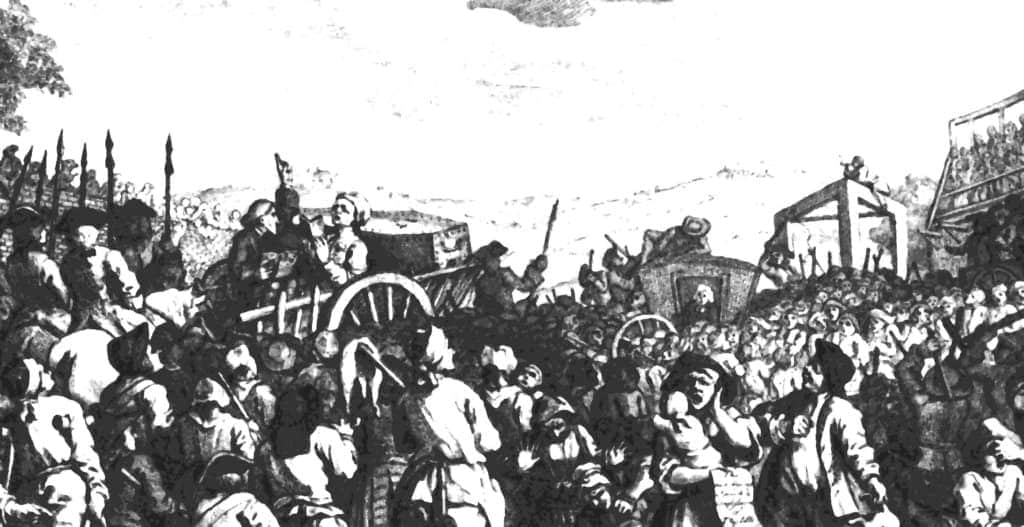Capital punishment has been around in Britain long before the creation of the United Kingdom. At its peak, it is said that there were some 220 crimes which were punishable by death including:
-
- Being out at night with a blackened face
- Impersonating a Chelsea Pensioner
- Damaging Westminster Bridge
- Being in the company of gipsies for a month
London – the largest and most influential city in the country – provided a grand backdrop for some of the most famous executions in history. With large crowds often gathering to watch these gruesome spectacles, the state used these events to publicly wield its power and to ultimately dissuade others from taking their first steps into less than salubrious careers.
Although the death penalty in England was abolished in 1965, we’ve managed to track down some of London’s most historic execution sites which we’ve marked on the interactive map below.
Newgate PrisonOnce the most notorious prison in London, Newgate was commissioned in the 12th century by King Henry II and remained in use all the way through to 1902. Built into a gate on the old Roman wall (hence the name “Newgate”) it was rebuilt numerous times during its lifespan. At the same time as the prison’s final rebuild in 1782, the site for London’s public gallows moved from Tyburn (in the modern day West End) over to Newgate Prison. This meant that the public executions were now held in the heart of the City of London, drawing large audiences all the way up until the public executions were abandoned in 1868. It is said that between 1790 and 1902 over one thousand people were put to death at Newgate; these were carried out outside the prison walls on the Old Bailey Road. The Central Criminal Court (a.k.a. the Old Bailey) now stands on the site of the old Newgate Prison. However, if you venture around the back of Amen Court you will find the only surviving wall of Newgate Prison. |
Execution DockAt one time the world’s largest port, it is hardly surprising that London has a rather prolific connection with piracy! Unfortunately for the pirates, all those years of fighting, drinking, debauchery, crime and plundering came to an abrupt end when during the 15th century The Admiralty decided to bring Execution Dock into use. Those pirates found guilty and sentenced to death would be paraded from Marshalsea Prison in Southward over London Bridge, past the Tower of London and towards Wapping where Execution Dock was located. The streets were often lined with spectators and the river packed full of boats, all keen to see the execution take place. On their final journey from the prison to the docks the condemned sailors were permitted one final wish… a quart of ale at The Turks Head Inn. At the alloted time (and after the ale was finished of course), the prisoners were led towards the dock. The execution dock itself was located just offshore and below the low tide line as this was where the jurisdiction of the Admiralty began. To make the whole ordeal as painful as possible the hanging took place using a shortened rope. This meant that the “drop” was not sufficient to break the neck, and instead the pirates died from a long and protracted suffocation. Once dead, the bodies were held in place until three tides had washed over them. Perhaps the most famous pirate to be executed was Captain Kidd in 1701, the inspiration for Treasure Island. The final hangings on Execution Dock were two men named George Davis and William Watts, both of whom were charged with piracy and met their maker on December 16, 1830. |
St Paul’s CathedralA most unlikely venue perhaps, however whilst St Paul’s was not a site used for executing common criminals, the churchyard was a place reserved for some extra-special naughty boys! And the naughty boys in question had just failed in their attempt to blow up the Protestant King James I and his parliament. On 30 January 1606, four of the infamous Gunpowder Plotters were executed at St Paul’s in the most public of displays, intended to warn others of the dire consequences of treason. The four men in question were Sir Everard Digby, Robert Winter, John Grant and Thomas Bates, who all met their bloody end in the churchyard first suffering hanging and then disembowelment. A few months later an English Jesuit priest, Father Henry Garnet, who had also been implicated in the plot was executed at the cathedral. His head was displayed on a pole on London Bridge. |
Old Palace YardNow home to the famous statue of Richard Coeur de Lion (aka King Richard I or Richard the Lionheart) astride his charger, just outside the Palace of Westminster, Old Palace Yard is yet another execution site in London. In 1606, just a day after four other conspirators associated with the Gunpowder Plot were executed in the churchyard of St Paul’s Cathedral, four of the remaining plotters, including Guy Fawkes himself, were executed in Old Palace Yard. As befits the age-old crime of treason, the conspirators were hanged, drawn and quartered. Just a few years later in 1618, the unlucky Sir Walter Raleigh lost his head in Old Palace Yard with the cry… “Strike, man, strike!”… heard shortly before the executioner’s axe fell. |
Banqueting Hall balconyOn a specially prepared scaffold outside the Banqueting House on Whitehall, King Charles I, monarch of the three kingdoms of England, Scotland and Wales was executed on 30 January 1649. Charles had quarrelled with the Parliament of England over his belief that he could govern his people by the divine right of kings, answerable to no man but only to the will of God. This prompted a series of events that ultimately led to the English Civil War, a conflict that saw Charles in a number of bloody battles with both the English and Scottish parliaments from 1642 until his defeat in 1645. Charles was tried and convicted of treason against the state, aka high treason, and sentenced to death by beheading. Dressed in two thick shirts, in order that the crowd would not mistake any shivers of cold for fear, Charles walked under guard from St James’s Palace to the Palace of Westminster and on to the executioner’s scaffold in front of the Banqueting House. After saying a prayer he signalled to the executioner that he was ready: he was beheaded in one clean stroke. A black mark next to the number 2 on the clock face at nearby Horse Guards commemorates the hour of the royal execution. |
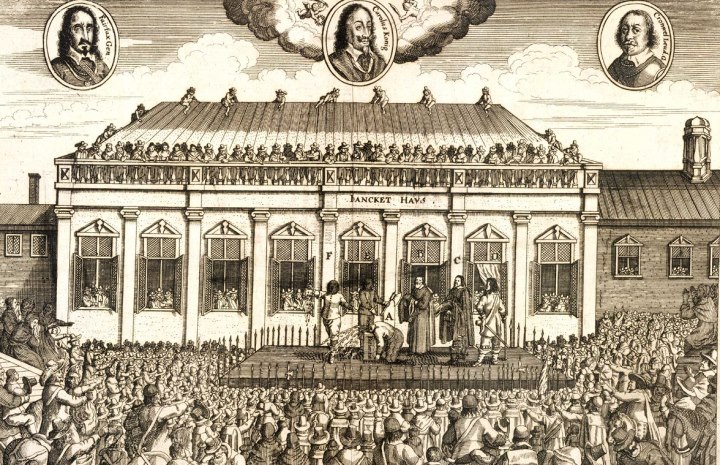
The Elms, SmithfieldDuring medieval times, Smithfield was one of the most important places in London, with jousting, summer fairs and, of course, the occasional execution. Famous dissenters and heretics who muttered their last breath at The Elms include William Wallace (of Braveheart fame, who was executed here in 1305) and Wat Tyler, one of the ringleaders in the Peasants Revolt of 1381. although the latter was only murdered here during a disagreement with the Lord Mayor of London and wasn’t actually executed. A small memorial plaque to William Wallace in Smithfield still attracts flower-laying Scottish patriots. Between 1555 and 1558, more than 50 Protestants were burnt at the stake for their beliefs during the reign of Queen Mary I (Bloody Mary), including clergymen, tailors and maids. |
The Tower of London and Tower HillContrary to popular belief, very few people were actually executed within the Tower complex itself; most public executions took place on nearby Tower Hill. The Tower was reserved for the superstars of their day, including the three queens: Anne Boleyn (1536), Catherine Howard (1542) and Lady Jane Grey (1554), who were all beheaded. As befits their station in life these were private executions, carried out beyond the gaze of the great unwashed. In particular, Anne Boleyn received extra-special treatment; to make sure her death was as quick as possible an expert swordsman was brought over from France. In stark contrast, the unlucky 68 year old Margaret Pole, Countess of Salisbury, met her gruesome end at the hands of a particularly useless executioner who literally hacked her to death. Although frail and ill, after the first botched attempt to remove her head, she leapt from the block and was chased by her axe-wielding executioner. She was struck eleven times with the axe before she died. The last person to be executed in the Tower was Josef Jakobs, a German spy, who was captured after parachuting into England during the Second World War. He was shot by a firing squad on 15 August 1941. A little to the northwest of the Tower of London is Tower Hill, the site of countless public executions. Many of the more distinguished names can be seen on plaques in the memorial gardens on the site of the Scaffold. Some of these are perhaps recognisable through association with those who met their end at the Tower, including George Boleyn, brother of Anne Boleyn, and Henry Howard, cousin of both Anne Boleyn and Catherine Howard. Sir Thomas More, the Lord High Chancellor of England, the man who opposed Henry VIII’s separation from the Catholic Church and the annulment of his first marriage to Katherine of Aragon is also named on the plaques, as is his arch nemesis Thomas Cromwell. |

Charing CrossNamed after the final Eleanor Cross that once occupied the site, the statue that now stands at the centre of the Charing Cross roundabout is that of Charles I astride his charger. Following the Restoration of the Monarchy in May 1660, the new King Charles II wasted little time exacting his revenge on the folk who had been responsible for removing his father’s (Charles I) head. Eight of the so called regicides (king killers) were hanged, drawn and quartered at Charing Cross a little later that year. The statue of King Charles was erected in 1675; however the site remained popular for public floggings long after this. |
Kennington CommonIf Tyburn met the needs of northern Londoners, the Surrey gallows at Kennington Common was the site of choice for executions south of the river until the late 1700s. Records indicate that since Sarah Elston was burned at the stake for killing her husband in 1678, more than 100 men and women were executed on gallows that stood on the site of St. Mark’s Church. A popular site for dispatching highway robbers, Kennington was also where 17 Jacobite rebels of the Manchester regiment, including their leader, one Colonel Frank Towneley, were hanged, drawn and quartered following the unsuccessful 1745 rising. During this period the common was also a popular venue for hosting cricket matches, as it remains to this day, located as it is, close to the Oval tube station. |
Pentonville PrisonFollowing the closure of Newgate Prison in 1902, its hangman’s gallows were stripped down, shipped over and re-assembled when Pentonville became the main execution site for men in London. In addition, it also became the No 1 training centre for would-be hangmen, who all attended the one week course before they could become proficient in the ‘Art of Hanging’. Between 1902 and 1961, 120 men were hanged at Pentonville, an average of 2 per year, making it the busiest execution centre in England and Wales. The vast majority of these were common murderers, the most famous perhaps being the 48 year old, Dr Hawley Harvey Crippen. Crippen had poisoned his domineering wife at their home and had fled to Belgium with his secretary Ethel, with whom he was having an affair. From Antwerp, Crippen and Ethel boarded a ship bound for Canada. Unbeknown to them however, the ship’s captain had recognised the wanted posters being circulated for Crippen and sent a ship to shore telegraph informing the authorities. Police Inspector Drew from Scotland Yard was immediately dispatched for Canada aboard an even faster steamship. Arriving first in Canadian waters, Drew of the Yard ‘made his collars’, arresting both Crippen and Ethel, before returning them to London for trial. This drama all played out on the high seas, and only made possible by the latest technological advance of the telegraph, was one of the greatest media sensations of the early 20th century. Crippens met his end at 9am on Wednesday 23 November 1911, and following her trial for being an accessory to murder, Ethel was released. |
Holloway PrisonFollowing the closure of Newgate Prison in 1902, Holloway became the main detention centre for women prisoners in London. As London’s female executions had previously been carried out at Newgate, Holloway now had the dubious honour of carrying these out as well. Between 1903 and 1955, a total of five women were put to death by hanging. The first women to be hanged were Amelia Sachs and Annie Walters in February 1903. The only double hanging of women to be carried out in Britain in modern times, the Finchley baby farmers had murdered at least 20 infants. Ruth Ellis became the last woman to be executed in Britain; she met her maker on 13 July 1955, found guilty of murdering her boyfriend, shooting him five times with a revolver after he had refused to meet her over the Easter holidays. |
TyburnAs a rather large city, London required several places of execution, prior of course to convicts and felons being deported first to America and then to Australia. In summary, the Tower of London was generally reserved for traitors, Execution Dock at Wapping for pirates, Smithfield for heretics and witches, whilst the Tyburn Gallows was used to stretch the necks of general felons and all round bad-boys. As such, it would have been the most overworked place of execution in London. A site of historic significance, it sits at the junction of two Roman roads, where Edgware Road meets Bayswater Road. In operation from 1196, the already infamous Tyburn Tree received some serious modernising in 1571. A triangular-shaped gallows was erected which reached approximately six metres in height. The three-sided design reflected the need to hang more than a single person at a time. In fact, each beam could accommodate eight people at once; in total twenty-four could swing together in one go. As many as twelve hanging days would occur each year, each one being declared a public holiday for the labouring classes. Released from Newgate Prison, the condemned were taken to Tyburn on a cart and had to ride with the hangman and the prison chaplin. Peace-officers would lead the procession while immediately behind the cart marched a troop of soldiers and constables. The procession passed through Holborn, St Giles and Tyburn Road (Oxford Street). Stops made at inns on the way allowed prisoners the chance to indulge in a drop or two of the hard stuff. It was not uncommon for prisoners to arrive at the scaffold drunk and disorderly. When Jack Sheppard, a notorious highwayman and all round bad-boy, was hanged there, it was said that the event attracted an audience of 200,000 people. One of the most famous hangings was that of Oliver Cromwell, although he had died a few years earlier and been laid to rest at Westminster Abbey, following the Restoration of the Monarchy in 1660, his body was exhumed and gibbeted at Tyburn. The Tyburn gallows were last used on 3 November 1783, when John Austin, a highwayman, was hanged; after this, executions were moved to Newgate prison. |
Lincoln’s Inn FieldsToday, the choice of many lawyers and surgeons relaxing over an al fresco picnic lunch is Lincoln’s Inn Fields, the largest public square in central London. In Tudor times however, this now tranquil site was the scene of several very gruesome public executions. The decades that followed Henry VIII’s split with the Roman Catholic Church were a turbulent time in England’s history. In 1586 a plot, the Babington Plot, was devised to assassinate the Protestant Queen Elizabeth and replace her with her Catholic cousin Mary, Queen of Scots. The plot was ultimately foiled and the conspirators, along with their leader Anthony Babington, were convicted of high treason and sentenced to death. The well-established method of dispatching enemies of the state was by subjecting the victims to the delights of being hanged, drawn and quartered. “…There to be hanged and cut down alive, and your body shall be opened, your heart and bowels plucked out, and your privy members cut off and thrown into the fire before your eyes. Then your head to be stricken off from your body, and your body shall be divided into 4 quarters, to be disposed of at (the Queen’s) pleasure.” Although there is no plaque to mark the exact site of these and the several other hangings that followed at Lincoln’s Inn Fields, consensus suggests that the current bandstand marks the most likely spot. |
Stratford-le-BowThe decades that followed Henry VIII’s split with the Roman Catholic Church were a turbulent time in England’s history. When Mary, the eldest child of Henry VIII, became queen in 1553, she attempted to reverse all of fathers ‘wrongs’ and enforce the wholesale conversion of England back to Catholicism. In her attempts to do so, she is fondly referred to in the history books as Bloody Mary. The Protestant bishops of Latimer, Ridley and Archbishop Cranmer were just a few of the prominent people she had burnt at the stake. Again, whilst the history books recall the names of these important and influential men, often forgotten are the ordinary folk who suffered a similar fate for their beliefs, such as the Burnyng of the Stratford Martyrs that took place on 27 June 1556, at Stratford-le-Bow. Watched by a crowd of more than 20,000, eleven men and two women were tied to three stakes and burnt to death on a single fire. The thirteen ordinary folk that were executed on that black day included a blacksmith, a woodworker, a brewer, a weaver, a tailor and a labourer. As one of the women was pregnant at the time, perhaps the death toll should read 14. On 2 August 1879 the Martyrs’ Memorial, a large monument, was erected in the churchyard of St John the Baptist Church, Stratford Broadway, to commemorate the thirteen and many others who were executed in Stratford during these turbulent times. |
Horsemonger Lane GaolOnce the largest prison in the country, between 1800 and 1877 Horsemonger Lane Gaol saw 135 convicts sent to meet their maker, a total that included 131 men and 4 women. Closed in 1878, the gaol was eventually pulled down in 1881 and turned into a public park. Although nothing now remains of the gaol, Charles Dickens who attended one of the public hangings that took place on 13 November 1849, records the event itself. In a letter to The Times he wrote, “I believe that a sight so inconceivably awful as the wickedness and levity of the immense crowd collected at that execution this morning could be imagined by no man, and could be presented in no heathen land under the sun.” The event he had witnessed was the hanging of a husband and wife, Fredrick and Maria Manning, who were being executed together after being found guilty of murder.In a case that became known as the “Bermondsey Horror,” they had killed Maria’s lover, Patrick O’Connor for his money and buried him under the kitchen floor.Dickens later based one of his characters on Maria Manning’s life… Mademoiselle Hortense, in Bleak House. |
Wandsworth PrisonStill the largest prison in the country, Wandsworth Prison assumed the execution duties of Horsemonger Lane Gaol when that fine institution closed in 1878. Between 1878 and 1961, Wandsworth was the site of 135 executions, mainly of convicted murderers, however the body count also included 10 spies (one in WWI and nine in WWII) and two traitors. Perhaps the most infamous of these was William Joyce, the WWII Nazi propaganda broadcaster known as Lord Haw-Haw. This American-born, Irish-British Fascist had been tormenting the British public over the airwaves through his radio broadcasts that always began with the announcement… “Germany calling, Germany calling, Germany calling”. His message to the millions of Britons that regularly tuned in to his jeering, sarcastic broadcasts was that resistance was futile and surrender was their best option. Captured by British forces in May 1945, Joyce was eventually hanged on 3 January 1946 at Wandsworth, aged 39. |
Fetter LaneThe decades that followed Henry VIII’s split with the Roman Catholic Church were a turbulent time in England’s history. A little known site for the execution of Catholics in the 1590s was at the junction of Fleet Street and Fetter Lane. Among those executed there was Christopher Bales (Bayles) an English Catholic priest, who was hanged and quartered on 4 March 1590: “For treason and favouring foreign invasion”. There is some evidence to suggest that this site was a popular place for executions even before the Reformation, and remained in use until at least 1733. |
Shooters Hill CrossroadsWithin the Royal Borough of Greenwich, Shooter’s Hill is one of the highest points in the London area. Set on the major road connecting London with the English Channel port of Dover, it was a common haunt for highwaymen and as such became a popular site for the gallows where such bad-boys were sent to meet their maker. Although the most notorious English highwaymen of the day appear to have met their end on the gallows at Tyburn, the crime of highway robbery remained so prevalent right up until the early 19th century that the Shooter’s Hill hangman was kept busy enough. |
Salmon and Ball Pub, Bethnal GreenA series of unrests occurred between 1763 and 1769 that centred on London’s East End, as thousands of silk weavers took to the streets to protest about poor rates of pay, cheap imports and the introduction of mechanised looms. Known as the Spitalfield Riots, such unrest often resulted in violent attacks on houses and workshops where new machine looms were destroyed and woe betide any that stood in the rioters way. Organising themselves into the very efficient but highly illegal, trade union groups, they destroyed (silk-cutting) cheap imported goods and even the silk from weavers who had accepted a lower rate of pay. In September 1769, soldiers raided the Dolphin pub in Spitalfields in an attempt to break up a weavers trade union meeting that was taking place and arrest its ring leaders. Things again turned nasty when in the melee that followed, the soldiers fired on the weavers killing two and a further four were arrested. In the trials that followed, all four prisoners were sentenced to death, two of whom, John Doyle and John Valline, met their end in front of the Salmon and Ball pub on 6 December 1769. The hangings had looked in doubt for a while after a crowd attacked the men building the gallows. It later emerged that money had crossed hands in order to gain the conviction all four weavers. |
St Thomas-a-Watering (modern day old Kent Road)Set on a former route for pilgrims visiting Canterbury, St Thomas-a-Watering on Old Kent Road gets its name from a spring that emerges at this spot dedicated to St Thomas a Becket. St Thomas-a-Watering became a well-known site for the execution of Catholics and dissenters during the reformation. In 1539, Griffith Clerke, Vicar of Wandsworth, along with three others, thought to be Catholic friars, were hanged and quartered on this site. Wales’s most famous Protestant martyr, John Penry was also executed at St Thomas-a-Watering in 1593, for doing little more than ‘issuing strong words of warning’ against the then Queen Elizabeth and her bishops. Many more executions of common criminals took place right up until 1740, when a father and son were hanged for murder. |
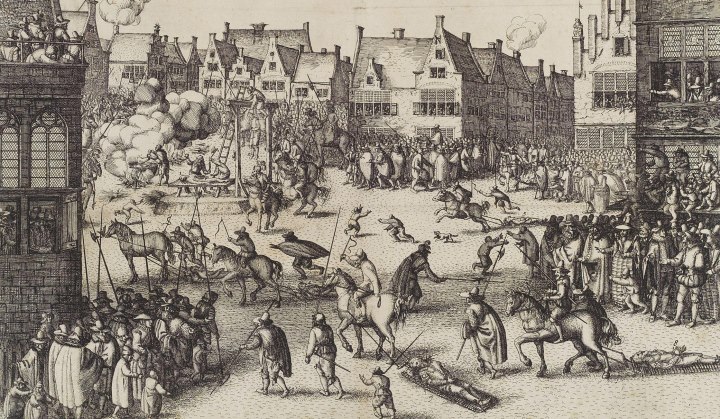
Published: 4th April 2016.
Tours of Historic London
Find out more about this great city by browsing our Selected Tours of London.
